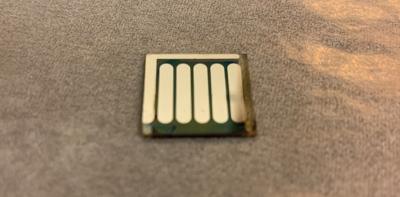Researchers at the University of California, Los Angeles have used a polymer film to reduce defects in the light-absorbing perovskite, producing solar cells that are efficient and relatively robust.

The team explains that perovskites usually used in solar cells typically contain an organic cation and lead halide anions. But the heat treatment used to convert the perovskite's precursors into a crystalline layer can also drive out some of these organic cations. This leaves defects in the material's structure that hamper its performance and potentially make it less stable to moisture, heat, and even sunlight itself.
The conductive polymer helped the cell to achieve up to 21.2% efficiency. 'That's a very competitive performance,' says Henry J. Snaith, who works on perovskite solar cells at the University of Oxford and who was not involved in the research. 'It's an interesting approach.'
The research team built 40 perovskite cells with the polymer layer, and all but one offered efficiencies of 19 to 21%. 'You don't just want the most efficient device'you need it to be reproducible' Yang Yang, leader of the study, says. 'High school kids in our lab can reproduce these results'.
The device also maintained 85% of its original performance after 430 hours at 85 °C, almost twice as long as a similar cell that did not contain PTQ10. The researchers estimate that if the cell were encapsulated to block air and moisture, the extra protection might allow it to surpass 1,000 hours under those conditions. That could put it in the same league as the most stable perovskite cells reported by other groups, says Rui Wang, part of Yang's team.
However, the devices still need further improvements to meet international stability standards for photovoltaic cells. And although the cells' perovskite is mostly formamidinium lead iodide, it also contains a bit of methylammonium lead bromide. Snaith points out that methylammonium is known to cause longer-term stability problems in perovskites.
For now, Yang's team plans to use PTQ10 to help produce thicker, defect-free perovskite films that can absorb more light and reach higher efficiencies.



